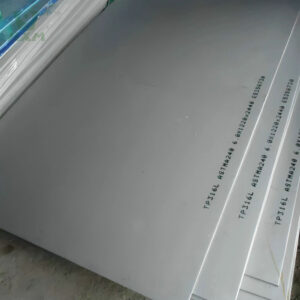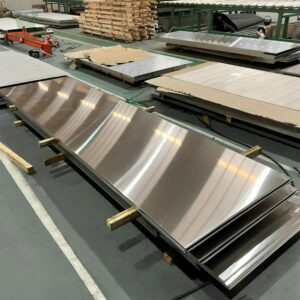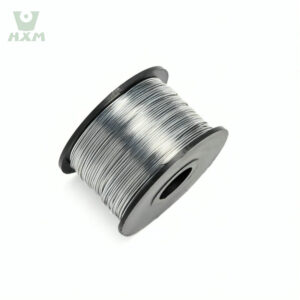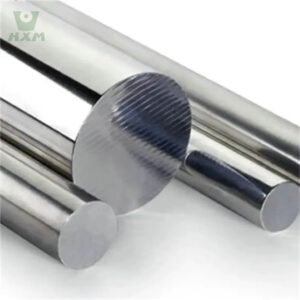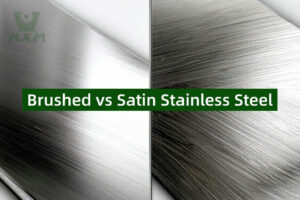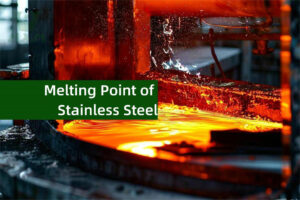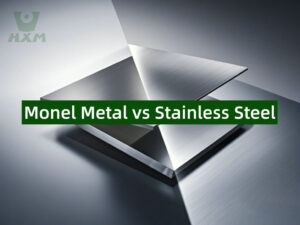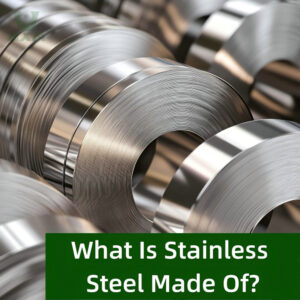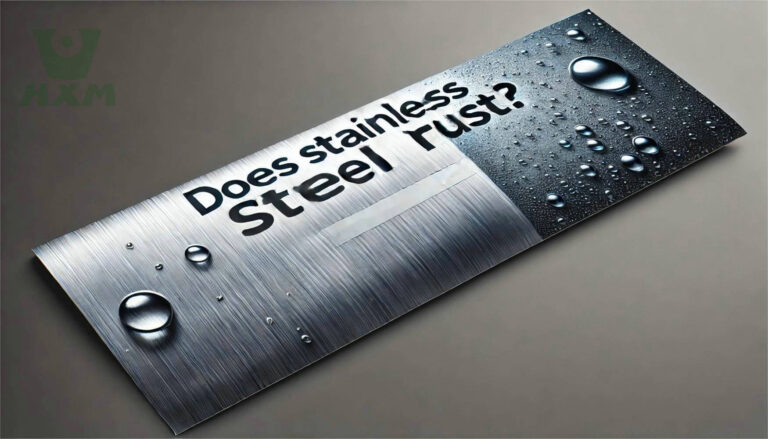
Stainless steel is renowned for its durability and resistance to corrosion, but many people wonder: Does stainless steel rust? The short answer is that stainless steel is highly resistant to rust, but it is not entirely immune. In this article, we’ll explore the factors that contribute to stainless steel’s corrosion resistance, the conditions under which it can rust, and how to prevent it.
What Makes Stainless Steel "Stainless"?
Stainless steel is an alloy composed primarily of iron, with a minimum of 10.5% chromium content. The chromium forms a thin, invisible layer of chromium oxide on the surface of the steel, known as the passive layer. This layer acts as a barrier, preventing oxygen and moisture from reaching the underlying metal, thus protecting it from rust and corrosion.
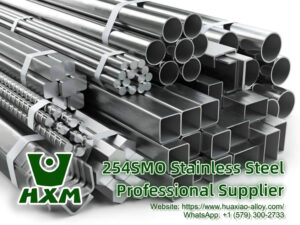
Huaxiao-Alloy: Premium 254SMO stainless steel manufacturer offering sheets, tubes, bars, and custom solutions. Explore specs, applications, and FAQs.
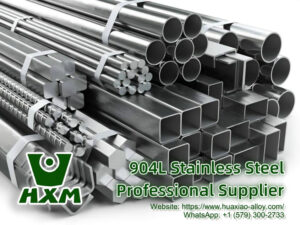
Huaxiao-Alloy: Premium 904L stainless steel manufacturer offering sheets, tubes, bars, and custom solutions. Explore specs, applications, and FAQs.
Types of Stainless Steel and Their Corrosion Resistance
There are several types of stainless steel, each with varying levels of corrosion resistance:
Austenitic Stainless Steel (e.g., 304, 316)
304 Stainless Steel: Contains 18% chromium and 8% nickel. Highly resistant to rust in most environments but can corrode in chloride-rich conditions (e.g., coastal areas).
316 Stainless Steel: Contains 16% chromium, 10% nickel, and 2% molybdenum. Offers superior resistance to chlorides and acids, making it ideal for marine and industrial applications.
Ferritic Stainless Steel (e.g., 430)
Contains 10.5-27% chromium but no nickel. Less resistant to corrosion than austenitic grades but still suitable for indoor and mildly corrosive environments.
Martensitic Stainless Steel (e.g., 410)
Contains 11.5-18% chromium and higher carbon content. Used in applications requiring high strength and moderate corrosion resistance, such as cutlery and tools.

Huaxiao-Alloy: Premium 254SMO stainless steel manufacturer offering sheets, tubes, bars, and custom solutions. Explore specs, applications, and FAQs.

Huaxiao-Alloy: Premium 904L stainless steel manufacturer offering sheets, tubes, bars, and custom solutions. Explore specs, applications, and FAQs.
When Can Stainless Steel Rust?
While stainless steel is highly resistant to rust, certain conditions can compromise its protective passive layer:
1. Exposure to Chlorides
Chlorides, found in saltwater, de-icing salts, and some cleaning agents, can break down the passive layer, leading to pitting corrosion or crevice corrosion.
Example: 304 stainless steel may rust in coastal environments, while 316 is more resistant due to its molybdenum content.
2. Mechanical Damage
Scratches, abrasions, or welding can damage the passive layer, exposing the underlying metal to corrosion.
Solution: Regular cleaning and passivation (restoring the passive layer) can help prevent rust.
3. High Temperatures
Prolonged exposure to high temperatures can cause scaling or oxidation, especially in lower-grade stainless steels.
Solution: Use high-temperature-resistant grades like 310 or 316 for such applications.
4. Chemical Exposure
Strong acids, alkalis, or industrial chemicals can attack the passive layer, leading to corrosion.
Solution: Choose a grade with higher corrosion resistance, such as 316 or duplex stainless steel.
How to Prevent Stainless Steel from Rusting
Choose the Right Grade:
Select a grade suited to your environment (e.g., 316 for marine or industrial use).
Regular Cleaning:
Clean stainless steel surfaces with mild soap and water to remove contaminants.
Avoid abrasive cleaners that can damage the passive layer.
Passivation:
Use a passivation treatment to restore the chromium oxide layer if the surface is damaged.
Avoid Chloride Exposure:
Rinse stainless steel exposed to saltwater or de-icing salts with fresh water.
Proper Storage:
Store stainless steel in a dry, well-ventilated area to prevent moisture buildup.
Common Myths About Stainless Steel and Rust
Myth 1: Stainless Steel Never Rusts
Fact: While highly resistant, stainless steel can rust under certain conditions, such as prolonged exposure to chlorides or mechanical damage.
Myth 2: All Stainless Steel Grades Are the Same
Fact: Different grades offer varying levels of corrosion resistance. For example, 316 is more resistant to chlorides than 304.
Myth 3: Rust on Stainless Steel Means It’s Fake
Fact: Rust can occur on genuine stainless steel if the passive layer is compromised.
Why Choose Huaxiao Alloy?
Stainless steel is a highly durable and corrosion-resistant material, but it is not entirely rust-proof. By understanding the factors that can lead to rust and taking preventive measures, you can ensure the longevity and performance of your stainless steel products. Whether you’re working with 304, 316, or another grade, proper care and material selection are key to maintaining its “stainless” properties.
Huaxiao Alloy is a trusted supplier of high-quality stainless steel products, offering a wide range of grades to meet your specific needs. From 304 to 316 and beyond, we provide solutions tailored to your application. Contact us today to learn more about our products and expertise.

Huaxiao-Alloy: Premium 254SMO stainless steel manufacturer offering sheets, tubes, bars, and custom solutions. Explore specs, applications, and FAQs.

Huaxiao-Alloy: Premium 904L stainless steel manufacturer offering sheets, tubes, bars, and custom solutions. Explore specs, applications, and FAQs.
The time it takes for stainless steel to rust depends on the environment and grade. In dry, indoor conditions, it can last indefinitely without rusting. However, in marine or highly acidic environments, lower-grade stainless steels like 304 may show signs of corrosion within months or even weeks, while higher-grade alloys like 316 can last much longer.
Stainless steel rusts when its protective chromium oxide layer is compromised. Common causes include:
- Exposure to chlorides (e.g., saltwater, chlorine) – Accelerates pitting and crevice corrosion.
- Acidic or highly humid environments – Can degrade the passive layer.
- Lack of oxygen – Prevents the formation of the protective oxide film (e.g., in tight crevices or stagnant water).
- Surface contamination – Contact with carbon steel or other corrosive materials can introduce rust.
No steel is 100% rust-proof, but stainless steels with high chromium and nickel content, such as 316 and 904L, have superior corrosion resistance. Additionally, duplex stainless steels (e.g., 2205) offer excellent rust resistance due to their unique microstructure.
To prevent rust, follow these precautions:
- Choose the right grade – Use 316 or duplex stainless steel in harsh environments.
- Keep it clean – Regularly wash with mild soap and water to remove contaminants.
- Avoid prolonged exposure to chlorides – Minimize contact with saltwater and harsh chemicals.
- Apply passivation treatments – Enhances the protective chromium oxide layer.
- Use protective coatings – Applying a thin oil or anti-corrosion coating can provide extra protection.
Gold is the only metal that does not rust or corrode under normal environmental conditions. Unlike iron-based metals, gold does not react with oxygen or moisture.
No stainless steel is completely rust-proof, but higher grades like 316, 904L, and duplex stainless steels (e.g., 2205) offer the best corrosion resistance, even in extreme environments such as marine or chemical processing applications.
The ASTM standards for Hastelloy C276 include:
- ASTM B575: Specification for plate, sheet, and strip.
- ASTM B619: Specification for welded pipe.
- ASTM B622: Specification for seamless pipe and tube.
- ASTM B626: Specification for welded tube.
These standards define the alloy’s chemical composition, mechanical properties, and manufacturing tolerances.
Does Stainless Steel Rust?
Call Us Now!!!

